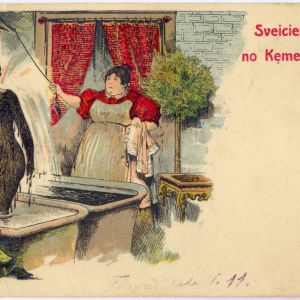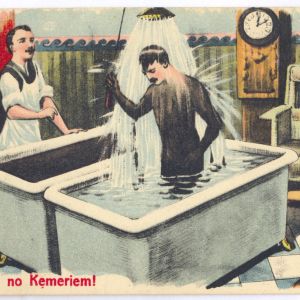The Journey of Mud: From Swamps to Healing
 Swamps have often been regarded as mystical and enigmatic places, inhabited by various supernatural beings and forces. And who’s to say they aren’t? Quite possibly! We don’t want to take away your belief in these mythical powers, but there are also entirely rational and scientifically proven forces at play. Specifically, the healing and therapeutic properties of swamp mud have been utilized since the 18th century.
Swamps have often been regarded as mystical and enigmatic places, inhabited by various supernatural beings and forces. And who’s to say they aren’t? Quite possibly! We don’t want to take away your belief in these mythical powers, but there are also entirely rational and scientifically proven forces at play. Specifically, the healing and therapeutic properties of swamp mud have been utilized since the 18th century.
How did mud from the swamp end up in Latvian spas? Historically, the Baldone Sanatorium was the first spa in Latvian balneology where, at the end of the 18th century, therapeutic peat mud from the Pladu Swamp (now closed) was used. Baldone was soon followed by Jūrmala, where this healing resource's first major research and chemical analyses were conducted in Ķemeri. It was in Ķemeri that the first steam-heated mud device was invented, laying the groundwork for the further use of therapeutic mud in spa treatments.
Today, the only place in Latvia where therapeutic peat mud is still extracted is from the Slokas Lake swamp, located within the territory of Jūrmala and part of the nature reserve zone of Ķemeri National Park. At the “Jaunķemeri” rehabilitation center, traditional spa treatments such as peloid therapy (mud therapy) are still practiced alongside conventional medical rehabilitation methods.
What exactly is peat mud? Peat mud is a sediment formed in swamps, created by the interaction of microorganisms in an oxygen-deprived environment where plant matter decomposes. To put it simply, the therapeutic peat mud of “Jaunķemeri” is enriched with various microelements, including hydrogen sulfide.
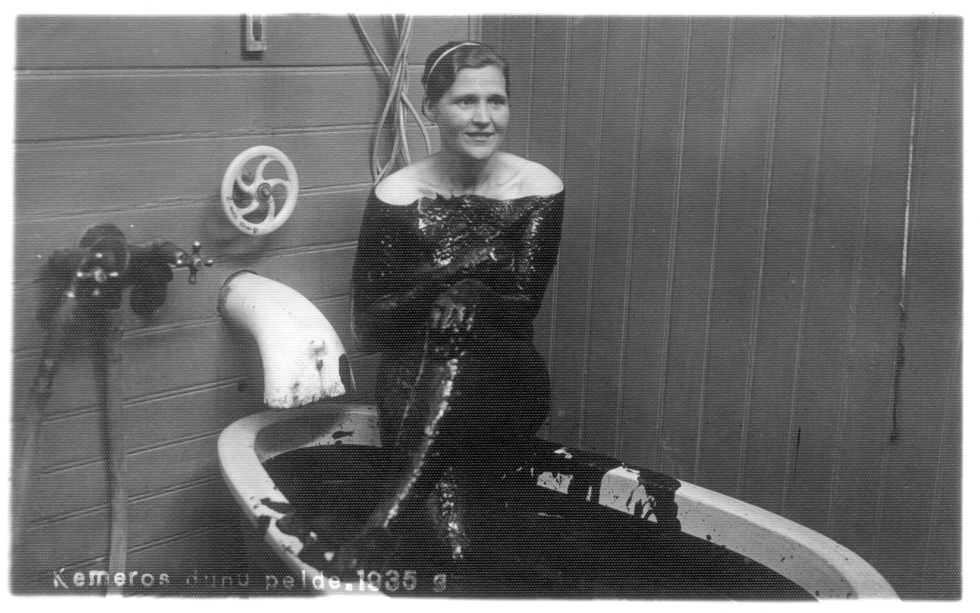
How is mud applied? The plasticity, viscosity, stickiness, high heat capacity, and low thermal conductivity of mud make it ideal for use in therapeutic applications. Based on medical recommendations, it can be applied to problematic areas such as the knees, ankles, hips, or shoulders. For the procedure to be effective, it’s essential to ensure the mud is at the correct temperature (40–42 °C) and applied in a proper thickness. The mud is spread on the patient’s skin over the problem area, then they are wrapped in special film and covered with a blanket. All that's left to do is relax and enjoy the warming effect! The procedure lasts around 15 minutes, after which the patient rinses off in a warm shower without using soap or shower gels. After rinsing, a brownish film may remain on the skin, which is recommended to leave on for continued benefit. Following the treatment, it’s advisable to rest indoors for about two hours. The effects are cumulative, so peloid therapy is usually done in courses and combined with other rehabilitation methods.
At the “Jaunķemeri” rehabilitation center, you can still experience mud and hydrogen sulfide mineral baths just as visitors once did in the Ķemeri resort: three buckets of mud are placed into a 200-liter tub, which is then filled with warm hydrogen sulfide mineral water. Although the mud is mixed into the water, it retains an uneven texture, which raises doubts about the iconic historical photos where women at the Ķemeri resort are seen covered head-to-toe in a thick layer of mud. Moreover, mud is never applied over the heart area—let alone up to the neck!
Who should avoid mud treatments? Peloid therapy is strictly contraindicated for those with acute pain, inflammation, flare-ups of illness, elevated body temperature, as well as cancer patients or those recovering from a stroke. However, for those unable to enjoy mud applications or baths, a combination of mud therapy with electrotherapy (electromud) may be recommended. In such cases, electrotherapy is performed through a layer of heated mud wrapped in cotton fabric.
Nowadays, mud is no longer applied to open wounds or mucous membranes, as was once the practice. Nor is it used in gynecology or infertility treatments, as it was in the past.
What is the healing power of mud? Today, the focus is mainly on the warming effect of mud, which helps reduce inflammation and improve blood circulation. This effect is due to the mud’s high heat capacity and low thermal conductivity, which allows it to be heated and maintain a stable temperature of about 42°C throughout the treatment. Additionally, mud has antioxidant properties that help remove free radicals from the body, while its antimicrobial properties come from the hydrogen sulfide component added to the mud.
How does mud form? Having discovered the surprising properties of mud, it’s interesting to understand how and where it forms. The creation of mud is a complex process that depends on several interacting factors. Certain geological conditions are necessary, such as appropriate rock formations where the mud can form. Climatic conditions, particularly precipitation and evaporation, play a crucial role in the mud formation process. Water flow and movement, which determine the hydrological conditions, are also significant, as are the chemical interactions of elements in physical-chemical processes. Finally, biological factors, such as the decomposition of organic matter, give mud its unique composition and properties.
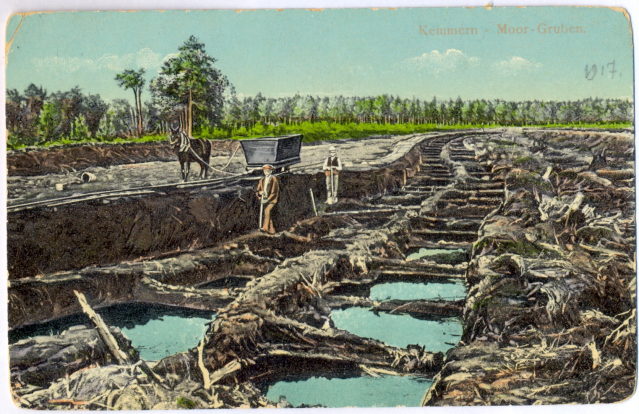
How is the mud extracted? To extract the mud from the Slokas Lake swamp, a special technological path must be created that is environmentally friendly. Concrete or asphalt cannot be used. In the past, wooden walkways or metal structures were employed, but today, portable concrete slabs are utilized. A large crawler excavator is used for extraction, and the operator must be mindful of the slope to avoid the risk of sliding due to the soft mud. The operator must skillfully collect the mud, fully clearing the area, so the path is regularly moved. The excavator operator also needs to know the thickness of the mud layer, so the unusable top layer is removed first, and the base layer is precisely assessed, as it can vary in different extraction sites. It's essential not to dig too deep, as that would reach the underlying rocks. Once dug, the mud is loaded onto trucks and transported by smaller tractors to the “mud kitchen” at the “Jaunķemeri” rehabilitation center.
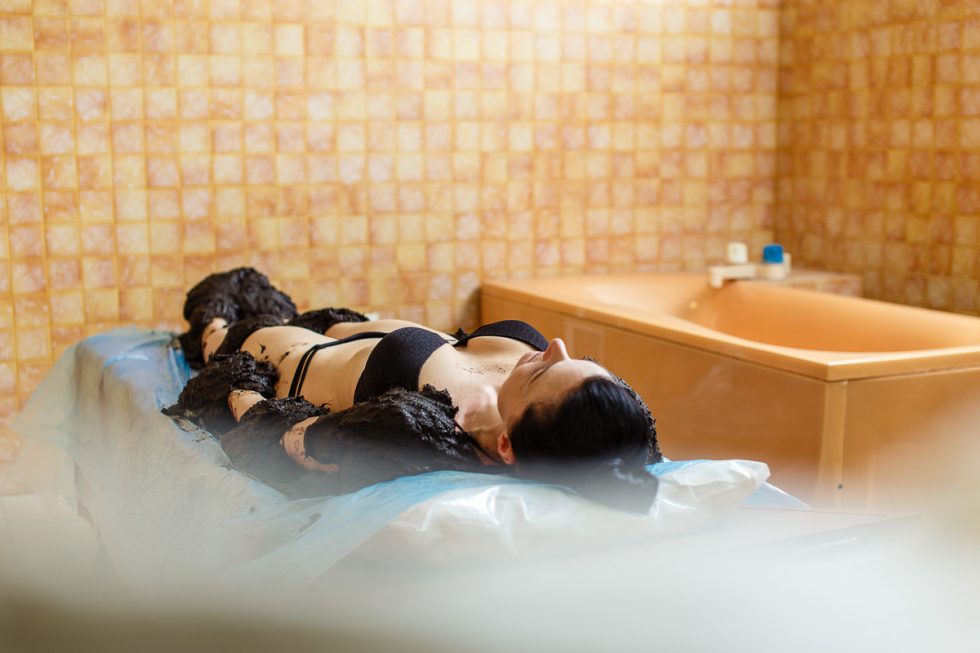
What happens in the “mud kitchen”? Here, specialists carefully remove larger elements like sticks, roots, shells, and stones from the mud. The mud is then placed in a heating device where hydrogen sulfide is added, and it is heated to 50°C. Once heated, it is cooled to about 42°C, ready for use in treatments. The mud is divided into buckets and transported to the treatment department, where the staff provides the therapy. This is no easy task—each patient requires at least three buckets of mud, which demands physical strength and endurance.
The mud used in treatments doesn’t need to be freshly delivered from the swamp. It is supplied to the rehabilitation center based on the planned number of patients, sometimes monthly or every two months. "Jaunķemeri" uses large amounts of mud, requiring about one ton per day to serve an average of 150 patients. In a month, the amount can reach around 40 tons. About 900 kilograms of mud from each ton is returned to nature after treatments.
Where does the mud go after treatments? According to Latvian law, which considers mud a valuable resource, its extraction and use must be rational. After treatments at the rehabilitation center, the mud is returned to nature in regeneration pools. On average, it takes about five years for the mud’s sanitary parameters and physical-chemical composition to regenerate.
Currently, a former extraction site is used as a regeneration area, and a sand barrier between the current and former sites prevents cross-contamination.
Text developed in collaboration with Elīna Malkiela, Head of the Medical Rehabilitation and Outpatient Services Department at the “Jaunķemeri” Rehabilitation Center.
Historical photographs and postcards – from the Jūrmala Museum archives.
